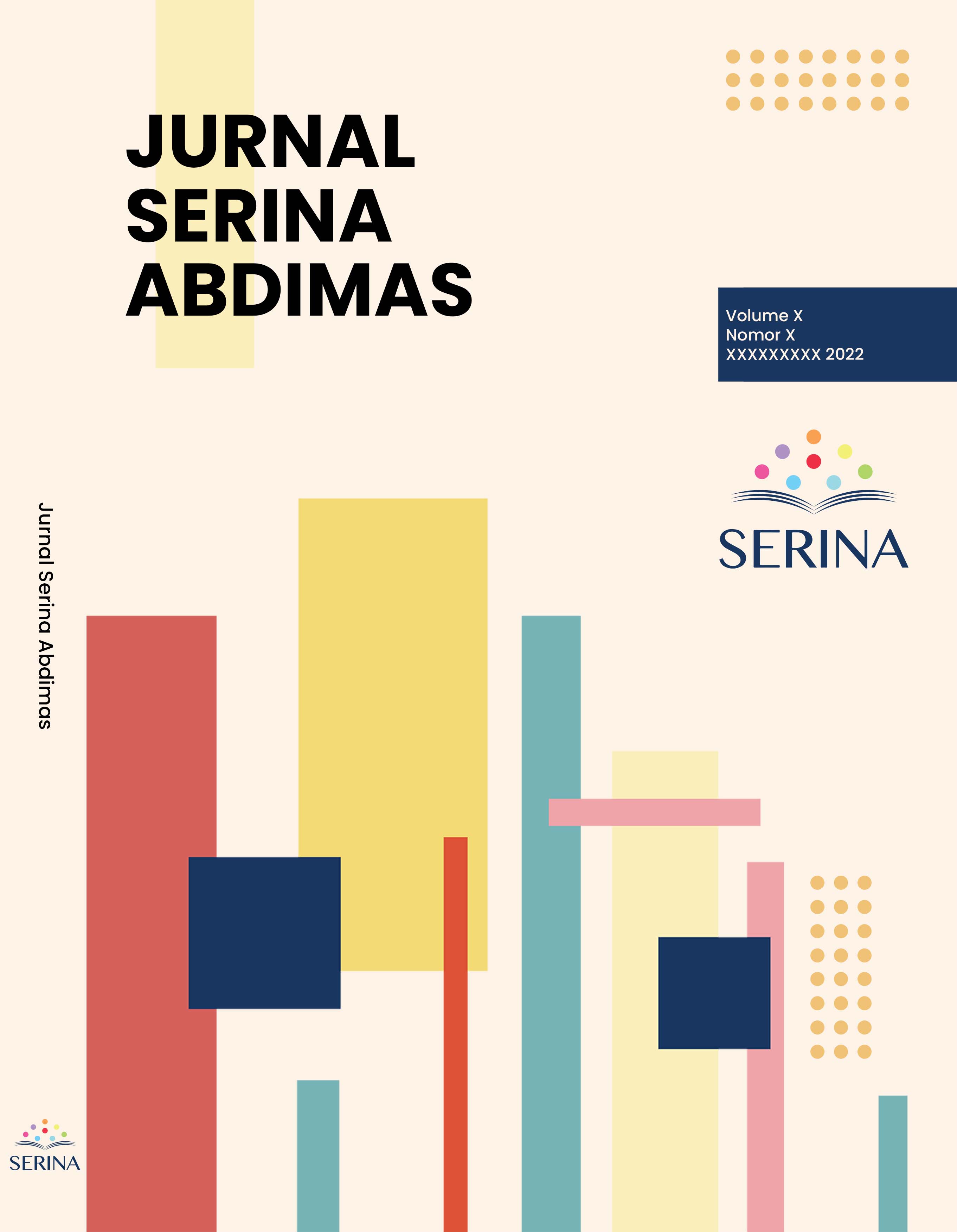EDUKASI DAN DETEKSI DINI KEKUATAN OTOT SEBAGAI PREDIKTOR KEJADIAN SARKOPENIA PADA KELOMPOK LANJUT USIA
Main Article Content
Abstract
Aging results in significant changes in body composition, including decreased muscle mass and increased fat mass. Muscle mass decreases by about 3–8% per decade after age 30, with the decline accelerating after age 60. This decrease in muscle strength, especially in women, is associated with various health problems, such as decreased physical function, decreased quality of life, weakness, and cognitive impairment. Clinical practice and public health research use Handgrip strength (HGS) as a simple, rapid, and cost-effective measure to assess musculoskeletal function and evaluate weakness and disability. This activity uses the PDCA (Plan-Do-Check-Act) methodology to educate and screen elderly participants at St. Mary's Church, Francis of Assisi, Jakarta. All participants took part in physical hand grip strength examination activities. This activity involved 35 participants, and it was found that the average grip strength for the left hand was 19.2% and 15.7% for the right hand. HGS screening is very important for the early detection of sarcopenia, a condition common in the elderly that causes a significant decline in health. Implementing preventive strategies based on HGS results can help maintain muscle mass and strength, thereby reducing the risk of dependency and limited mobility.
Abstrak
Penuaan mengakibatkan perubahan signifikan pada komposisi tubuh, termasuk penurunan massa otot dan peningkatan massa lemak. Massa otot menurun sekitar 3-8% per dekade setelah usia 30 tahun, dengan penurunan yang semakin cepat setelah usia 60 tahun. Penurunan kekuatan otot ini, terutama terjadi pada wanita, dikaitkan dengan berbagai masalah kesehatan seperti penurunan fungsi fisik, penurunan kualitas hidup, kelemahan, serta gangguan kognitif. Kekuatan genggaman tangan (HGS) adalah ukuran sederhana, cepat, dan hemat biaya yang digunakan dalam praktik klinis dan penelitian kesehatan masyarakat untuk menilai fungsi muskuloskeletal dan mengevaluasi kelemahan dan kecacatan. Kegiatan ini menggunakan metodologi PDCA (Plan-Do-Check-Act) untuk mendidik dan menyaring peserta lanjut usia di Gereja St. Fransiskus Asisi, Jakarta. Seluruh peserta mengikuti kegiatan pemeriksaan kekuatan fisik genggaman tangan. Kegiatan ini mengikutsertakan 35 peserta dan didapatkan rerata kekuatan genggaman tangan kiri adalah 19,2% dan 15,7% untuk tangan kanan. Pemeriskaan HGS sangat penting untuk deteksi dini sarkopenia, suatu kondisi yang umum terjadi pada lansia yang menyebabkan penurunan kesehatan secara signifikan. Penerapan strategi pencegahan berdasarkan hasil HGS dapat membantu menjaga massa dan kekuatan otot, sehingga dapat mengurangi risiko ketergantungan dan keterbatasan mobilitas.
Article Details

This work is licensed under a Creative Commons Attribution-NonCommercial-ShareAlike 4.0 International License.
References
Amaral, C. A., Amaral, T. L. M., Monteiro, G. T. R., Vasconcellos, M. T. L., & Portela, M. C. (2019). Hand grip strength: Reference values for adults and elderly people of Rio Branco, Acre, Brazil. PloS One, 14(1), e0211452. https://doi.org/10.1371/journal.pone.0211452
Ardeljan, A. D., & Hurezeanu, R. (2024). Sarcopenia. In StatPearls. http://www.ncbi.nlm.nih.gov/pubmed/30312372
Bohannon, R. W. (2019). Grip Strength: An Indispensable Biomarker For Older Adults. Clinical Interventions in Aging, 14, 1681–1691. https://doi.org/10.2147/CIA.S194543
Cannataro, R., Carbone, L., Petro, J. L., Cione, E., Vargas, S., Angulo, H., Forero, D. A., Odriozola-Martínez, A., Kreider, R. B., & Bonilla, D. A. (2021). Sarcopenia: Etiology, Nutritional Approaches, and miRNAs. International Journal of Molecular Sciences, 22(18), 9724. https://doi.org/10.3390/ijms22189724
Cho, M.-R., Lee, S., & Song, S.-K. (2022). A Review of Sarcopenia Pathophysiology, Diagnosis, Treatment and Future Direction. Journal of Korean Medical Science, 37(18), e146. https://doi.org/10.3346/jkms.2022.37.e146
Giovannini, S., Brau, F., Forino, R., Berti, A., D’Ignazio, F., Loreti, C., Bellieni, A., D’Angelo, E., Di Caro, F., Biscotti, L., Coraci, D., Fusco, A., Padua, L., & Bernabei, R. (2021). Sarcopenia: Diagnosis and Management, State of the Art and Contribution of Ultrasound. Journal of Clinical Medicine, 10(23). https://doi.org/10.3390/jcm10235552
Lupton-Smith, A., Fourie, K., Mazinyo, A., Mokone, M., Nxaba, S., & Morrow, B. (2022). Measurement of hand grip strength: A cross-sectional study of two dynamometry devices. The South African Journal of Physiotherapy, 78(1), 1768. https://doi.org/10.4102/sajp.v78i1.1768
Mehmet, H., Yang, A. W. H., & Robinson, S. R. (2020). Measurement of hand grip strength in the elderly: A scoping review with recommendations. Journal of Bodywork and Movement Therapies, 24(1), 235–243. https://doi.org/10.1016/j.jbmt.2019.05.029
Mey, R., Calatayud, J., Casaña, J., Cuenca-Martínez, F., Suso-Martí, L., Andersen, L. L., & López-Bueno, R. (2023). Handgrip strength in older adults with chronic diseases from 27 European countries and Israel. European Journal of Clinical Nutrition, 77(2), 212–217. https://doi.org/10.1038/s41430-022-01233-z
Wiśniowska-Szurlej, A., Ćwirlej-Sozańska, A., Kilian, J., Wołoszyn, N., Sozański, B., & Wilmowska-Pietruszyńska, A. (2021). Reference values and factors associated with hand grip strength among older adults living in southeastern Poland. Scientific Reports, 11(1), 9950. https://doi.org/10.1038/s41598-021-89408-9

